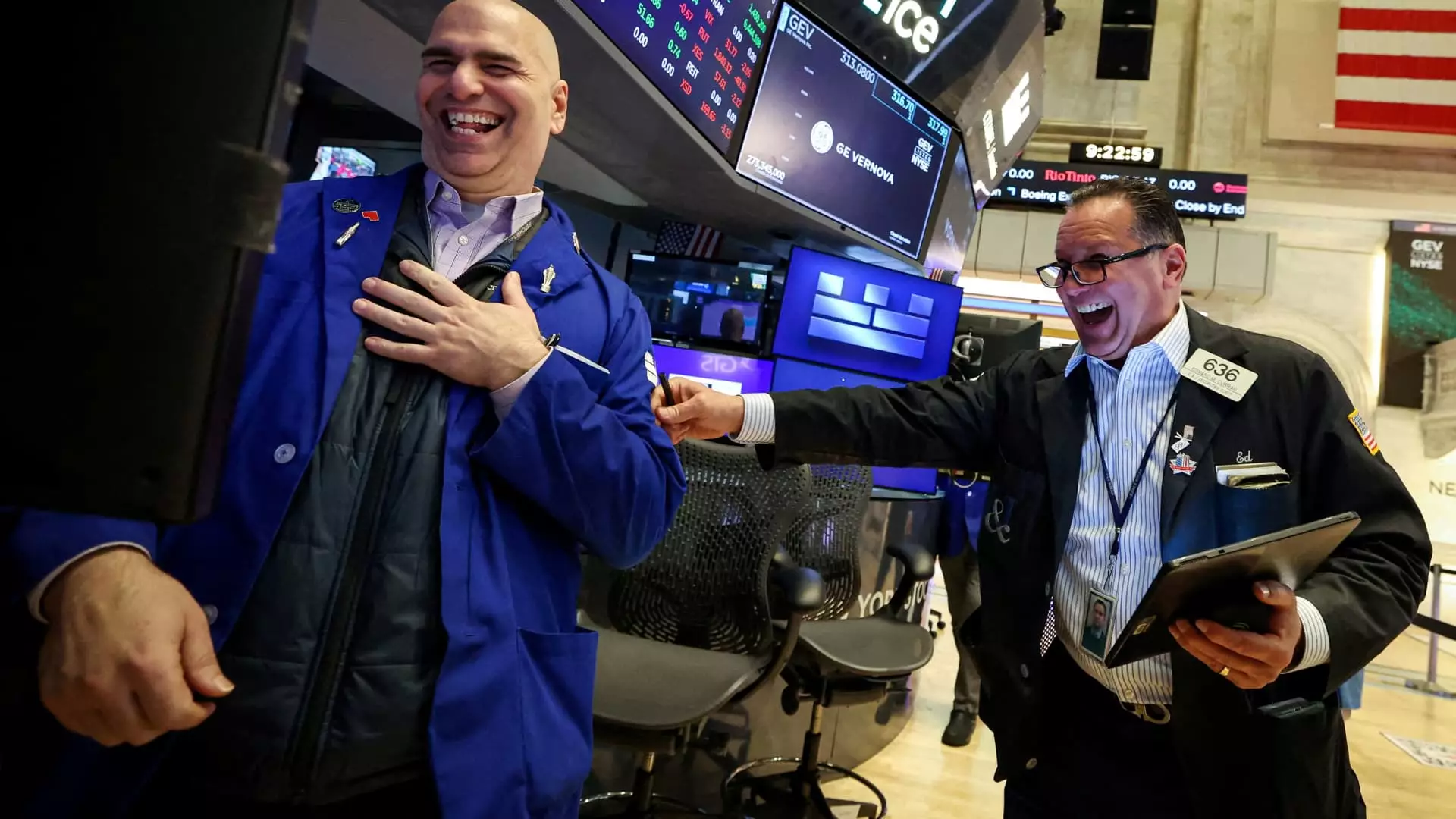In a striking turn of events, the stock market recently experienced a staggering two-day rally, with indices like the Dow Jones Industrial Average soaring by over 1,100 points. This spike, however, bears the signature of a phenomenon rooted in the tumultuous psychology of short sellers. When financial markets become hostage to the whims of hedge fund managers, investors find themselves on a proverbial rollercoaster that, while thrilling, is fundamentally unstable. The surge can largely be attributed to the pressure on short sellers to cover their positions amid rising stock prices—an event known as a “short squeeze.”
When these traders bet against the market, they aim to profit from declines; however, when prices unexpectedly climb, they scramble to buy back shares they had borrowed at lower prices. The distress signals sent by rapidly increasing stock prices create a vicious cycle of buying, which can amplify market volatility. These two days of exuberance were not sustained by any genuine economic data or corporate earnings but rather by the sheer desperation of traders trapped on the wrong side of their bearish bets.
The Influence of the Short Sellers’ Gambit
Goldman Sachs’ prime brokerage data recently indicated an uptick in short positions, particularly in single stocks and those linked to broader macroeconomic trends. As bearish bets multiplied, the market became increasingly primed for a sudden upthrust, reflecting how intertwined market behavior is with speculative trading tactics. Indeed, moments like these showcase the sheer fragility of the stock market when it operates more on sentiment and less on substantive data, a trend that absolutely warrants scrutiny in our current investment climate.
Short selling may seem a legitimate investment strategy, built on empirical forecasts. But these frenetic behaviors only highlight the ethical and economic dilemmas that come into play when traders use fear as a primary navigation tool. In environments where traders react impulsively to headlines—particularly those coming from Washington—the connective tissue that holds stable market growth together is stretched thin, if not severed altogether. Minute fluctuations in rhetoric from figures like President Donald Trump can send ripples throughout financial markets, leading to supercharged reactions that obscure the reality of underlying economic stability.
Taming the Breach of Investor Confidence
Consider the day-to-day impacts of these financial shenanigans. The short-covering frenzy was momentarily staved off by hints of easing trade tensions between the U.S. and China. Still, with the Trump administration’s proclamations frequently oscillating between optimistic and pessimistic, one has to question the solidity of investor confidence in the midst of such volatility. One day, White House advisors hint at “a big deal” on trade issues; the next, we’re left reeling from conflicting messages about the Federal Reserve.
The onus ultimately lies on longer-term investors to adopt a more stable approach. The rally’s lifeline—hedge funds scurrying to cover their shorts—barely scratched the surface of sustainable market recovery. John Flood of Goldman Sachs hinted at the lurking risks by highlighting that short-covering simply hasn’t morphed into genuine interest in purchasing stocks for the long haul. It begs the question: Are we witnessing a powerful recovery rally or just another market mirage?
The Risk of A Short Squeeze Society
What the oscillations of recent stock activities reveal is a broader philosophical concern about the nature of modern finance. A system that buzzes with life during moments of short squeezes raises alarms about its long-term viability. Every surge seems less connected to fundamental economic realities and too reliant on speculative maneuvers, revealing potentially disastrous implications for the future.
As short sellers retreat under pressure, it’s essential for market players—both individual and institutional—to reflect deeper on their strategies. If the markets deteriorate into cycles dictated by fear and frenzied short-covering rather than calculated investment, we risk eroding the very foundations of a healthy economy. A Wall Street governed by turbulent emotions will never gain the legitimacy it requires for sustained success.
In the end, the latest massive climb in stock prices may well be a harbinger of more significant underlying issues, where short-term gains result from panic and not principled investing. The question looms large: when will we tame the market’s obsession with the immediate, and shift toward a narrative grounded in stability and foresight?

